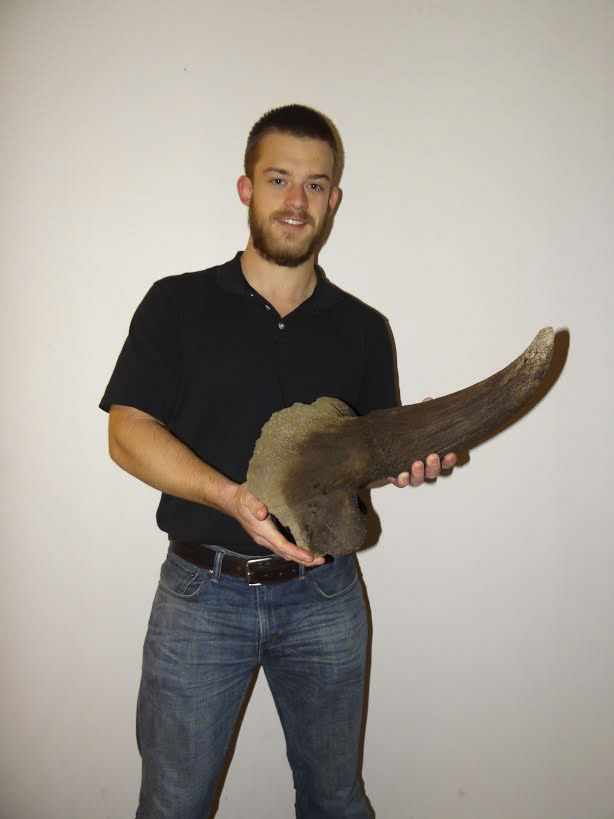ISU student discovers ancient bison horn near Squaw Creek
Benjamin Worrell, senior in civil engineering, found an ancient bison horn while taking a walk near Squaw Creek in December.
March 10, 2015
Sometimes a guy is in the right place at the right time.
Benjamin Worrell, senior in civil engineering and an archeology enthusiast, found an ancient bison horn while taking a walk near Squaw Creek in December.
“It was actually in the creek and a couple of feet underwater,” Worrell said. “There were a bunch of round rocks … and then there was one that was cone shaped, and I thought, ‘what the hell is that?’”
Worrell said he used a wire he was carrying to dangle over the water, and a long stick to fish the object out of the creek.
“When I finally got it to the bank, after a lot of effort, [the horn] was all mucky and muddy, and I just chucked it up on the bank because I thought it was from some kind of cattle or something,” Worrell said.
According to his measurements, the horn itself is a foot long and still attached to about 8 inches of a partial skull.
“I left it outside through rain and all that stuff, put it on my front patio and didn’t really learn much more about it for a while,” he said.
Worrell said that he remained curious about the horn as he showed it to friends, but his Internet searches for a breed of cattle with horns of the correct dimensions and shape proved fruitless.
Worrell works part time at the Department of Transportation, where his archaeologist coworkers helped him identify that the horn was from an ancient bison.
Matthew Hill, associate professor of anthropology, said the specimen was most likely from the species Bison antiquus occidentalis, which lived shortly after the most recent ice age.
DNR geologist Matthew Graesch indicated that the specimen is likely from the same time frame, making it approximately 10,000 years old, if not older. Graesch added that this age would likely put similar animals in the same era as the earliest Native Americans in the Midwest.
However, that doesn’t mean that the specimen was in Squaw Creek for the entire time. Worrell said his geologist coworkers at the DOT told him the horn was probably preserved in a gravel pocket for thousands of years, and over time, a stream meandered to include that pocket — thus uncovering the horn.
Worrell said he does not intend to pursue archeology as a career, but he enjoys it as one of his many outdoor hobbies.
He enjoys sharing his finds, including this bison horn, with others.
“I’ve been sharing [the horn] with a lot of people and that’s why this stuff is interesting to me,” Worrell said. “Sharing is what makes it important, you know?”
Graesch said he only finds pieces this spectacular approximately once a year.
“It’s not a major contributor to science or anything spectacularly rare. … It’s kind of beat up. But I wouldn’t sell it, even if it was worth a lot of money,” said Worrell, who also has ancient Indian arrowheads, pottery shards and a spearhead in his personal collection.
Worrell said he found the spearhead at a shooting range, dug up the pottery at his family friends’ vacation home and inherited approximately 10 arrowheads from his great-grandfather, who pulled them out of his fields while plowing.
“A lot of [artifacts] are thousands of years old, and people now know that native people were [in the Midwest], but they think of that being in the last couple hundred years,” Worrell said. They don’t really think, ‘oh wow, 10,000 years ago …’”
Worrell said that increasing others’ knowledge and awareness of the past is part of the reason he enjoys sharing what he finds with friend and family.
“Everything natural just fascinates me, and archaeology is mixed in with all that,” Worrell said.

















